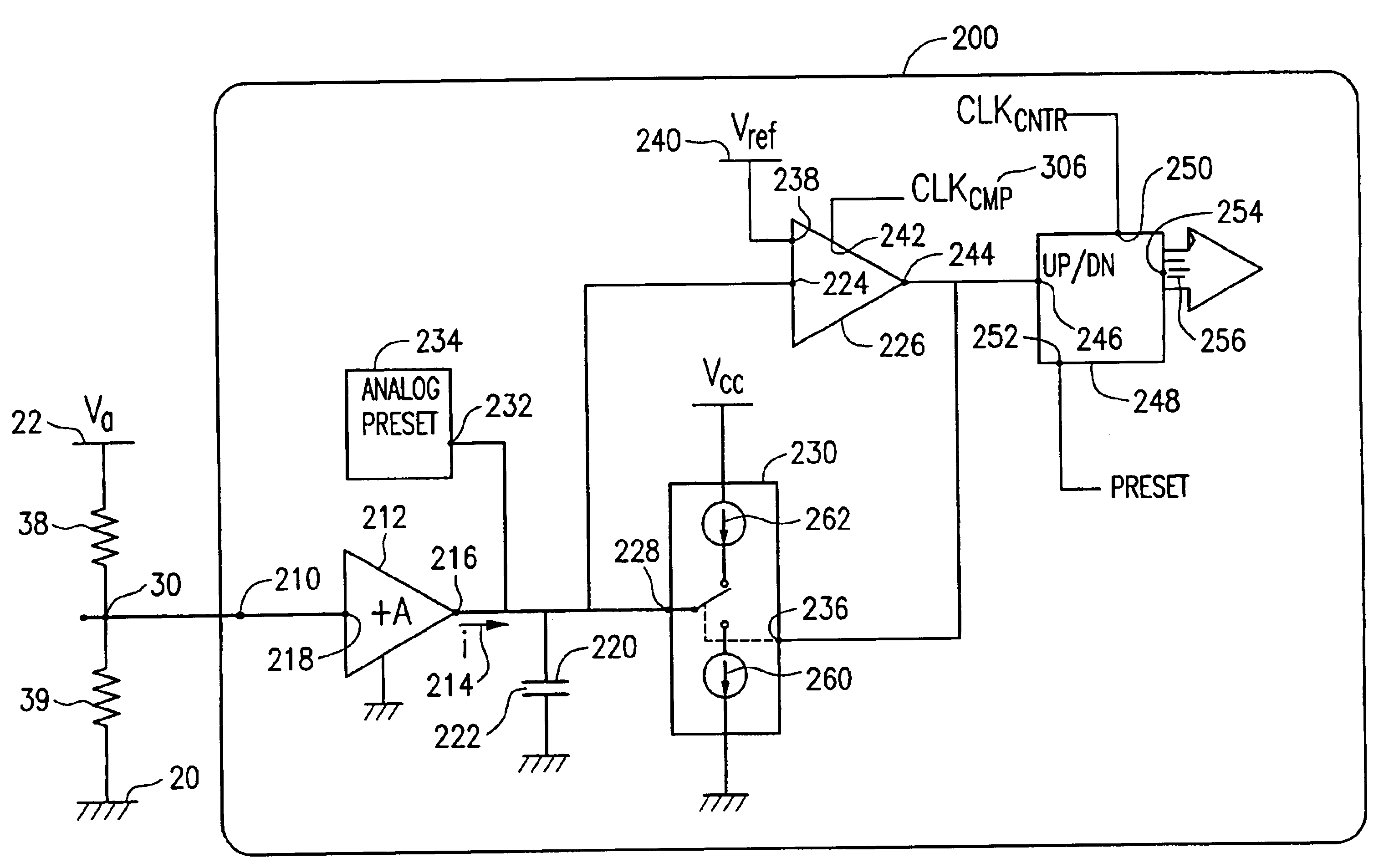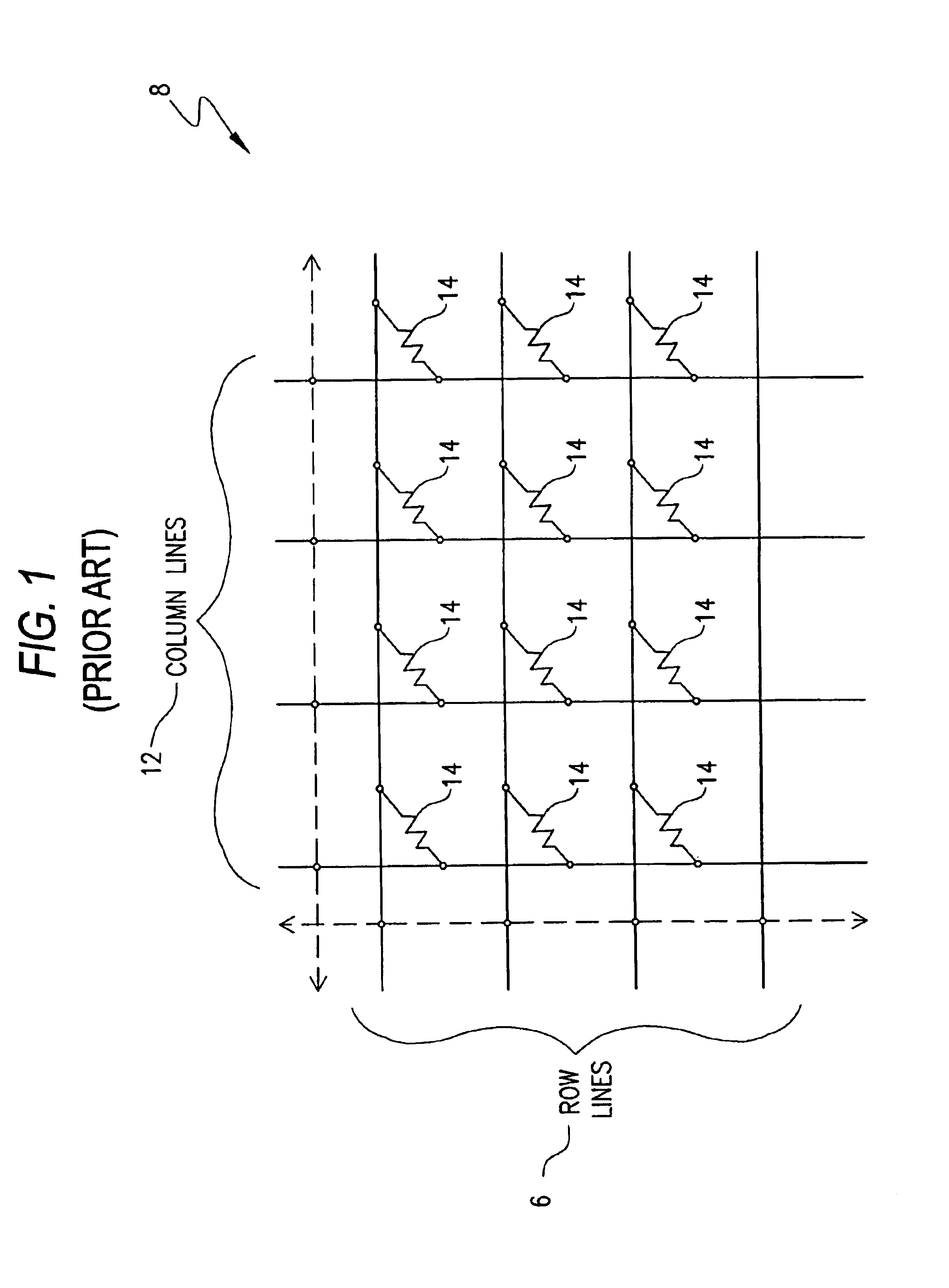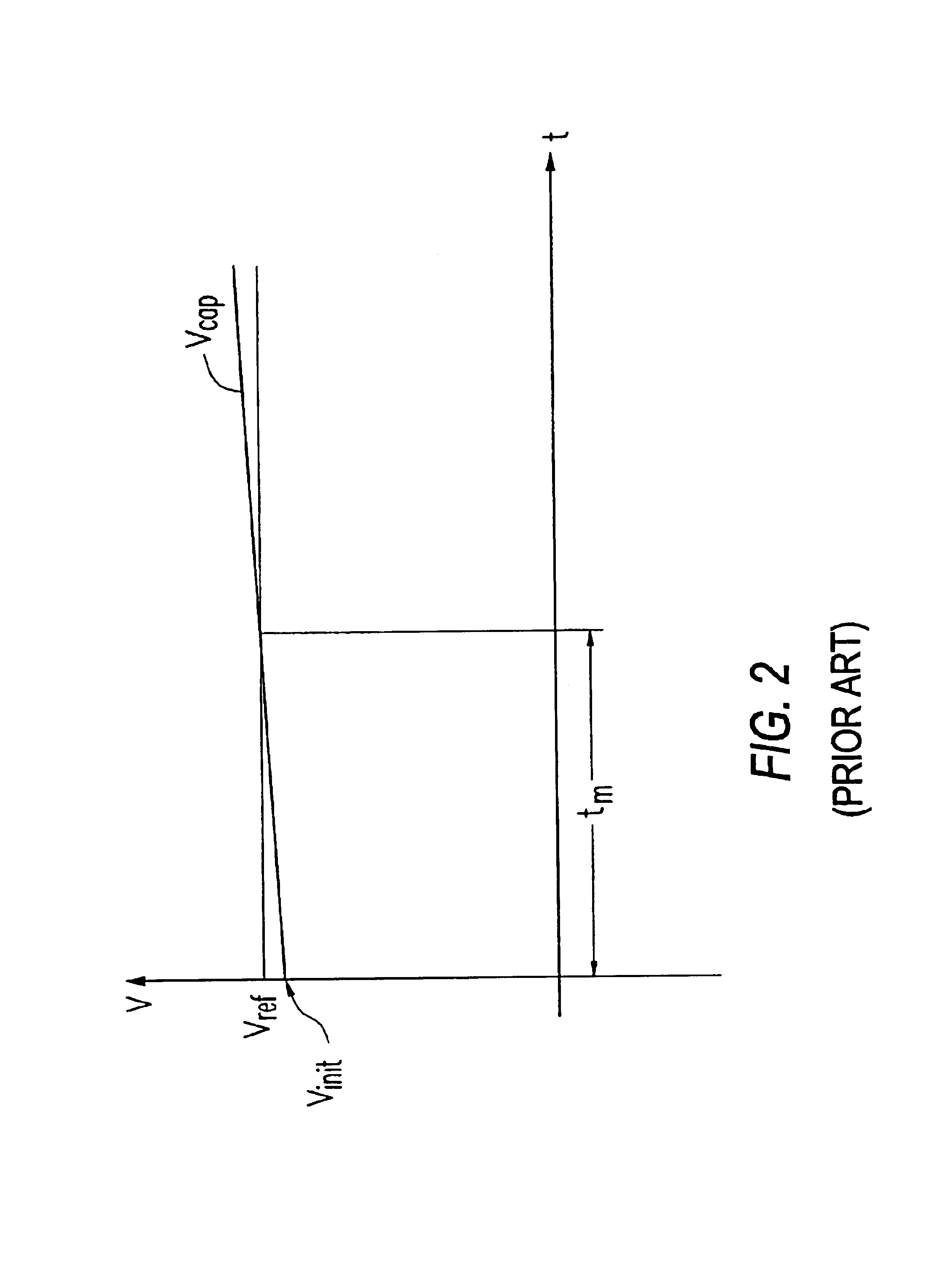Dual loop sensing scheme for resistive memory elements
a sensing scheme and memory element technology, applied in the direction of information storage, static storage, digital storage, etc., can solve the problems of difficult sensing of the logic state of an mram memory element, and the sensing scheme is vulnerable to stochastic noise, so as to improve the sensitivity of the sensing circuit
- Summary
- Abstract
- Description
- Claims
- Application Information
AI Technical Summary
Benefits of technology
Problems solved by technology
Method used
Image
Examples
Embodiment Construction
[0030]The present invention operates by receiving a signal, representing a programmed resistance state of a resistive memory cell, at a digital counter. A resulting digital count value, taken after a sensing time interval, represents the resistance state of the memory cell. Because the count value is digitized and acquired over an extended time, high-frequency stochastic noise in the system is filtered out.
[0031]FIG. 4 shows, in schematic overview, a portion of a memory device according to one aspect of the invention. A crosspoint array of resistive memory cells are configured so that resistance of a particular memory cell may be represented by a sensing voltage. The device 5 includes an array 8 of MRAM cells 14, a plurality of spaced electrically conductive row lines 6, and a plurality of spaced electrically conductive column lines 12. The plurality of row lines 6 is disposed substantially orthogonally to the plurality of column lines 12, defining a plurality of overlap regions at ...
PUM
 Login to View More
Login to View More Abstract
Description
Claims
Application Information
 Login to View More
Login to View More - R&D
- Intellectual Property
- Life Sciences
- Materials
- Tech Scout
- Unparalleled Data Quality
- Higher Quality Content
- 60% Fewer Hallucinations
Browse by: Latest US Patents, China's latest patents, Technical Efficacy Thesaurus, Application Domain, Technology Topic, Popular Technical Reports.
© 2025 PatSnap. All rights reserved.Legal|Privacy policy|Modern Slavery Act Transparency Statement|Sitemap|About US| Contact US: help@patsnap.com



